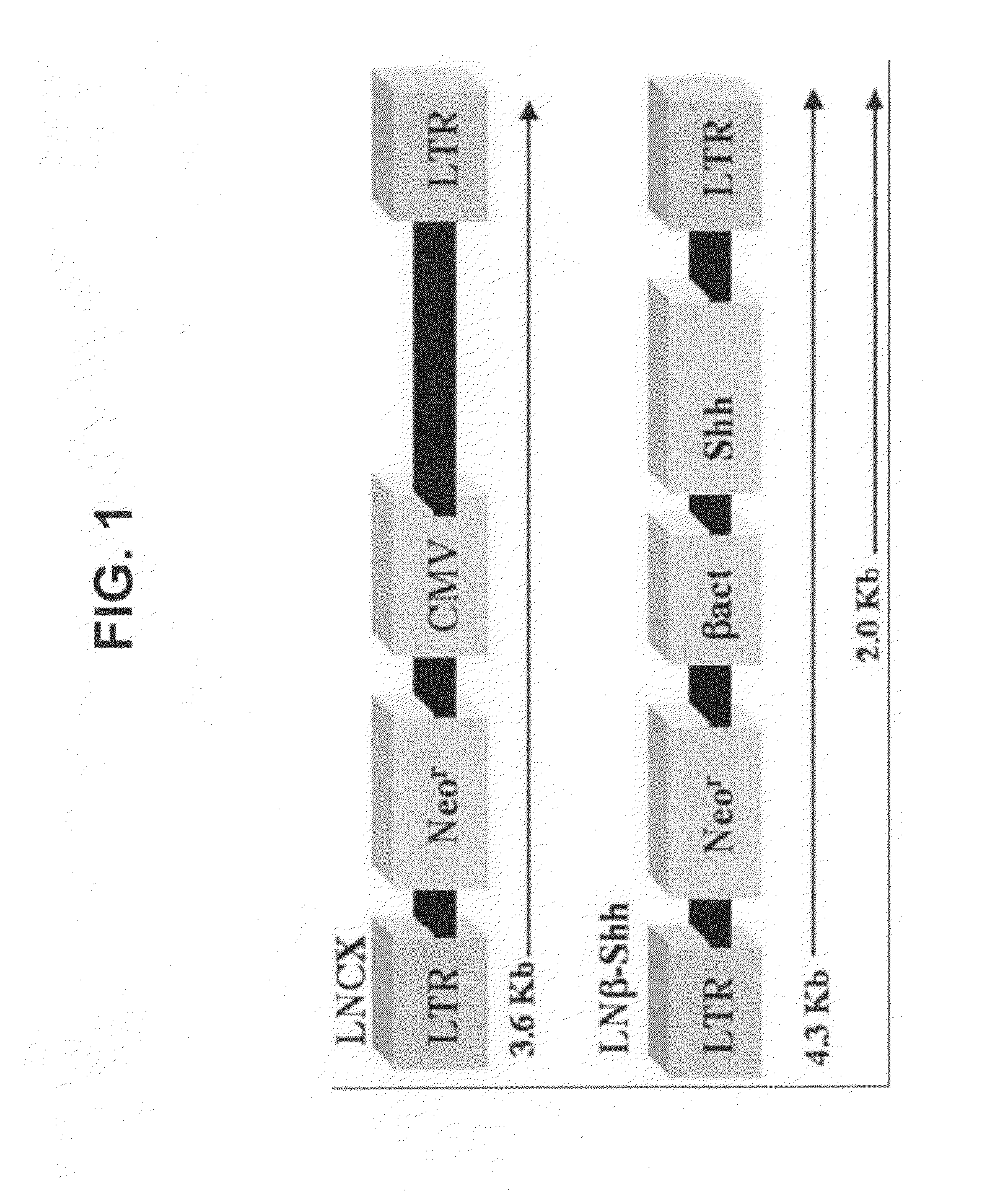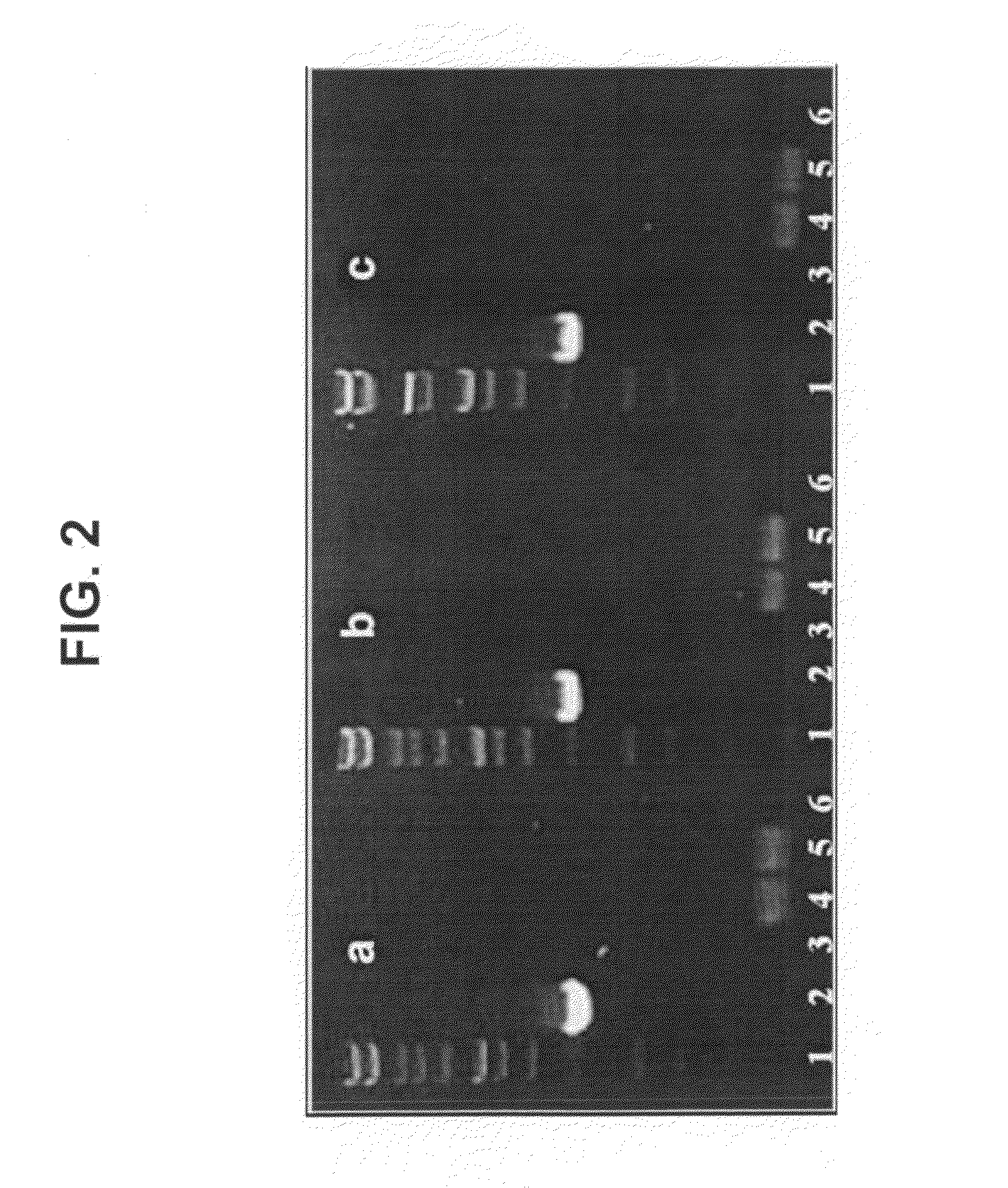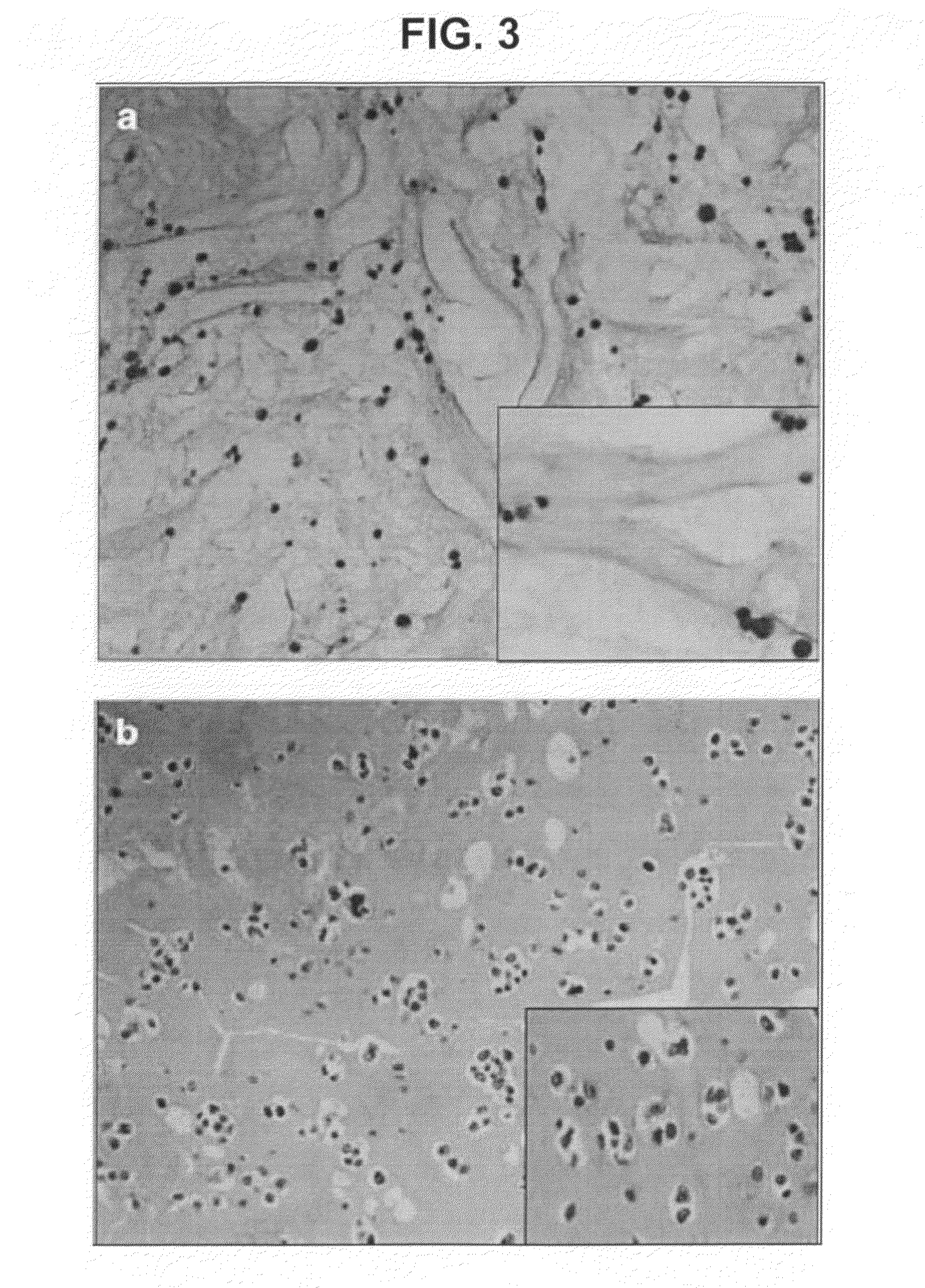Gene-enhanced tissue engineering
a tissue engineering and gene technology, applied in the field of tissue engineering, can solve the problems of affecting the regeneration of fully functional tissues, preventing the proper innervation of distal organs, and scar tissue formation is problemati
- Summary
- Abstract
- Description
- Claims
- Application Information
AI Technical Summary
Benefits of technology
Problems solved by technology
Method used
Image
Examples
example
Sonic Hedgehog Gene-Enhanced Tissue Engineering for Bone Regeneration
[0208]These results are published as Edwards et al. (2005).
example summary
[0209]Improved methods of bone regeneration are needed in the craniofacial rehabilitation of patients with significant bone deficits secondary to tumor resection, congenital deformities, and prior to prosthetic dental reconstruction. In this study, a gene-enhanced tissue-engineering approach was used to assess bone regenerative capacity of Sonic hedgehog (SHH)-transduced gingival fibroblasts, mesenchymal stem cells, and fat-derived cells delivered to rabbit cranial bone defects in an alginate / collagen matrix. Human SHH cDNA isolated from fetal lung tissue was cloned into the replication-incompetent retroviral expression vector LNCX, in which the murine leukemia virus retroviral LTR drives expression of the neomycin-resistance gene. The rat β-actin enhancer / promoter complex was engineered to drive expression of SHH. Reverse transcriptase-polymerase chain reaction analysis demonstrated that the transduced primary rabbit cell populations expressed SHH RNA. SHH protein secretion was con...
PUM
| Property | Measurement | Unit |
|---|---|---|
| temperature | aaaaa | aaaaa |
| temperature | aaaaa | aaaaa |
| thickness | aaaaa | aaaaa |
Abstract
Description
Claims
Application Information
 Login to View More
Login to View More - R&D
- Intellectual Property
- Life Sciences
- Materials
- Tech Scout
- Unparalleled Data Quality
- Higher Quality Content
- 60% Fewer Hallucinations
Browse by: Latest US Patents, China's latest patents, Technical Efficacy Thesaurus, Application Domain, Technology Topic, Popular Technical Reports.
© 2025 PatSnap. All rights reserved.Legal|Privacy policy|Modern Slavery Act Transparency Statement|Sitemap|About US| Contact US: help@patsnap.com



